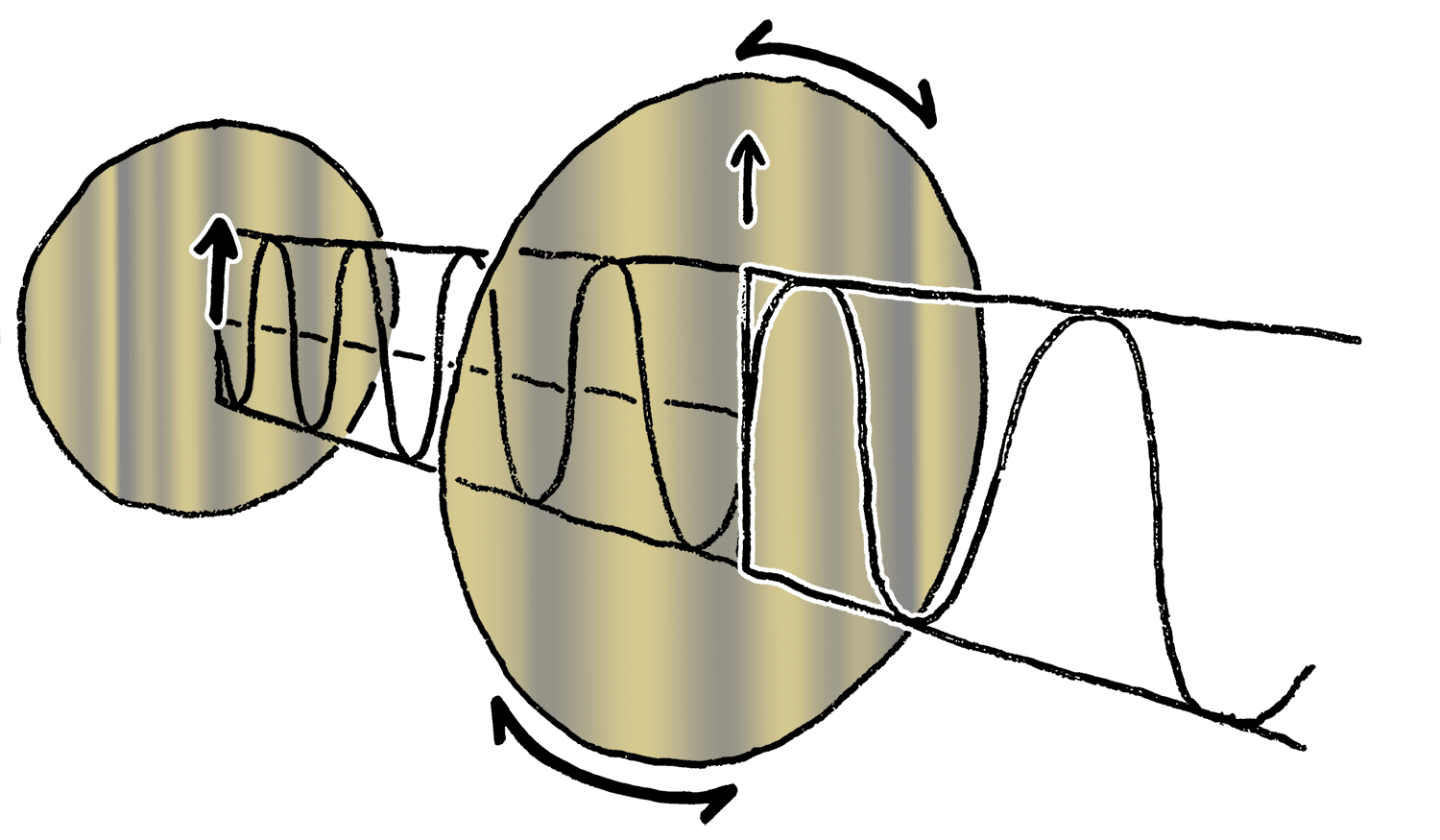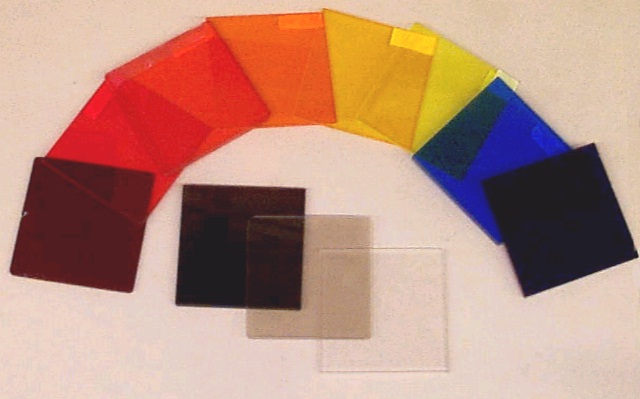|
Polarizer
A polarizer or polariser is an optical filter that lets light waves of a specific polarization (waves), polarization pass through while attenuation, blocking light waves of other polarizations. It can filter a beam of light of undefined or mixed polarization into a beam of well-defined polarization, known as polarized light. Polarizers are used in many optics, optical techniques and optical instrument, instruments. Polarizers find applications in photography and liquid crystal display, LCD technology. In photography, a polarizing filter (photography), polarizing filter can be used to filter out reflections. The common types of polarizers are linear polarizers and circular polarizers. Polarizers can also be made for other types of electromagnetic waves besides visible light, such as radio waves, microwaves, and X-rays. Linear polarizers ''Linear polarizers'' can be divided into two general categories: absorptive polarizers, where the unwanted polarization states are absorption ... [...More Info...] [...Related Items...] OR: [Wikipedia] [Google] [Baidu] |
Polarizing Filter (photography)
A polarizing filter or polarising filter (see spelling differences) is a filter that is often placed in front of a camera lens in photography in order to darken skies, manage reflections, or suppress glare from the surface of lakes or the sea. Since reflections (and sky-light) tend to be at least partially linearly-polarized, a linear polarizer can be used to change the balance of the light in the photograph. The rotational orientation of the filter is adjusted for the preferred artistic effect. For modern cameras, a circular polarizer (CPL) is typically used, which has a linear polarizer that performs the artistic function just described, followed by a quarter-wave plate, which further transforms the linearly polarized light into circularly-polarized light. The circular polarization avoids problems with autofocus and the light-metering sensors in some cameras, which otherwise may not function reliably with only a linear polarizer. Use Light reflected from a non-meta ... [...More Info...] [...Related Items...] OR: [Wikipedia] [Google] [Baidu] |
Photographic Filter
In photography and cinematography, a filter is a camera accessory consisting of an optical filter that can be inserted into the optical path. The filter can be of a square or oblong shape and mounted in a holder accessory, or, more commonly, a glass or plastic disk in a metal or plastic ring frame, which can be screwed into the front of or clipped onto the camera lens. Filters modify the images recorded. Sometimes they are used to make only subtle changes to images; other times the image would simply not be possible without them. In monochrome photography, coloured filters affect the relative brightness of different colours; red lipstick may be rendered as anything from almost white to almost black with different filters. Others change the colour balance of images, so that photographs under incandescent lighting show colours as they are perceived, rather than with a reddish tinge. There are filters that distort the image in a desired way, diffusing an otherwise sharp image, add ... [...More Info...] [...Related Items...] OR: [Wikipedia] [Google] [Baidu] |
Polarization (waves)
, or , is a property of transverse waves which specifies the geometrical orientation of the oscillations. In a transverse wave, the direction of the oscillation is perpendicular to the direction of motion of the wave. One example of a polarized transverse wave is vibrations traveling along a taut string, for example, in a musical instrument like a guitar string. Depending on how the string is plucked, the vibrations can be in a vertical direction, horizontal direction, or at any angle perpendicular to the string. In contrast, in longitudinal waves, such as sound waves in a liquid or gas, the displacement of the particles in the oscillation is always in the direction of propagation, so these waves do not exhibit polarization. Transverse waves that exhibit polarization include electromagnetic waves such as light and radio waves, gravitational waves, and transverse sound waves ( shear waves) in solids. An electromagnetic wave such as light consists of a coupled oscillating el ... [...More Info...] [...Related Items...] OR: [Wikipedia] [Google] [Baidu] |
Polarized Light
, or , is a property of transverse waves which specifies the geometrical orientation of the oscillations. In a transverse wave, the direction of the oscillation is perpendicular to the direction of motion of the wave. One example of a polarized transverse wave is vibrations traveling along a taut string, for example, in a musical instrument like a guitar string. Depending on how the string is plucked, the vibrations can be in a vertical direction, horizontal direction, or at any angle perpendicular to the string. In contrast, in longitudinal waves, such as sound waves in a liquid or gas, the displacement of the particles in the oscillation is always in the direction of propagation, so these waves do not exhibit polarization. Transverse waves that exhibit polarization include electromagnetic waves such as light and radio waves, gravitational waves, and transverse sound waves ( shear waves) in solids. An electromagnetic wave such as light consists of a coupled oscillating elec ... [...More Info...] [...Related Items...] OR: [Wikipedia] [Google] [Baidu] |
Optics
Optics is the branch of physics that studies the behaviour and properties of light, including its interactions with matter and the construction of optical instruments, instruments that use or Photodetector, detect it. Optics usually describes the behaviour of visible light, visible, ultraviolet, and infrared light. Light is a type of electromagnetic radiation, and other forms of electromagnetic radiation such as X-rays, microwaves, and radio waves exhibit similar properties. Most optical phenomena can be accounted for by using the Classical electromagnetism, classical electromagnetic description of light, however complete electromagnetic descriptions of light are often difficult to apply in practice. Practical optics is usually done using simplified models. The most common of these, geometric optics, treats light as a collection of Ray (optics), rays that travel in straight lines and bend when they pass through or reflect from surfaces. Physical optics is a more comprehensive mo ... [...More Info...] [...Related Items...] OR: [Wikipedia] [Google] [Baidu] |
Optical Filter
An optical filter is a device that selectively transmits light of different wavelengths, usually implemented as a glass plane or plastic device in the optical path, which are either dyed in the bulk or have interference coatings. The optical properties of filters are completely described by their frequency response, which specifies how the magnitude and phase of each frequency component of an incoming signal is modified by the filter. Filters mostly belong to one of two categories. The simplest, physically, is the absorptive filter; then there are interference or dichroic filters. Many optical filters are used for optical imaging and are manufactured to be transparent; some used for light sources can be translucent. Optical filters selectively transmit light in a particular range of wavelengths, that is, colours, while absorbing the remainder. They can usually pass long wavelengths only (longpass), short wavelengths only (shortpass), or a band of wavelengths, bloc ... [...More Info...] [...Related Items...] OR: [Wikipedia] [Google] [Baidu] |
Sunglasses
Sunglasses or sun glasses (informally called shades or sunnies; more names Sunglasses#Other names, below) are a form of Eye protection, protective eyewear designed primarily to prevent bright sunlight and high-energy visible light from damaging or discomforting the eyes. They can sometimes also function as a visual aid, as variously termed spectacles or glasses exist, featuring lenses that are colored, polarizer, polarized or darkened. In the early 20th century, they were also known as sun cheaters (cheaters then being an United States, American slang term for glasses). Since the 1930s, sunglasses have been a popular fashion accessory, especially on the beach. The American Optometric Association recommends wearing sunglasses that block ultraviolet radiation (UV) whenever a person is in the sunlight to protect the eyes from UV and blue light, which can cause several #Protection, serious eye problems. Their usage is mandatory immediately after some surgical procedures, such as L ... [...More Info...] [...Related Items...] OR: [Wikipedia] [Google] [Baidu] |
Liquid Crystal Display
A liquid-crystal display (LCD) is a flat-panel display or other Electro-optic modulator, electronically modulated optical device that uses the light-modulating properties of liquid crystals combined with polarizers to display information. Liquid crystals do not emit light directly but instead use a backlight or Reflector (photography), reflector to produce images in color or Monochrome monitor, monochrome. LCDs are available to display arbitrary images (as in a general-purpose computer display) or fixed images with low information content, which can be displayed or hidden: preset words, digits, and seven-segment displays (as in a digital clock) are all examples of devices with these displays. They use the same basic technology, except that arbitrary images are made from a matrix of small pixels, while other displays have larger elements. LCDs are used in a wide range of applications, including LCD televisions, computer monitors, Dashboard, instrument panels, flight instrument ... [...More Info...] [...Related Items...] OR: [Wikipedia] [Google] [Baidu] |
Tourmaline
Tourmaline ( ) is a crystalline silicate mineral, silicate mineral group in which boron is chemical compound, compounded with chemical element, elements such as aluminium, iron, magnesium, sodium, lithium, or potassium. This gemstone comes in a wide variety of colors. The name is derived from the Sinhala language, Sinhalese (), which refers to the carnelian gemstones. History Brightly colored Ceylonese gem tourmalines were brought to Europe in great quantities by the Dutch East India Company to satisfy a demand for curiosities and gems. Tourmaline was sometimes called the "Ceylonese Magnet" because it could attract and then repel hot ashes due to its Pyroelectricity, pyroelectric properties. Tourmalines were used by chemists in the 19th century to Polarization (waves), polarize light by shining rays onto a cut and polished surface of the gem. Species and varieties Commonly encountered species and varieties of tourmaline include the following: * Schorl species ** Brownish ... [...More Info...] [...Related Items...] OR: [Wikipedia] [Google] [Baidu] |
Silver Nanoparticle
Silver nanoparticles are nanoparticles of silver of between 1 nm and 100 nm in size. While frequently described as being 'silver' some are composed of a large percentage of silver oxide due to their large ratio of surface science, surface to bulk silver atoms. Numerous shapes of nanoparticles can be constructed depending on the application at hand. Commonly used silver nanoparticles are spherical, but diamond , octagonal, and thin sheets are also common. Their extremely large surface area permits the coordination of a vast number of ligands. The properties of silver nanoparticles applicable to human treatments are under investigation in laboratory and animal studies, assessing potential efficacy, biosafety, and biodistribution. Synthesis methods Wet chemistry The most common methods for nanoparticle synthesis fall under the category of wet chemistry, or the nucleation of particles within a solution. This nucleation occurs when a silver ion complex, usually AgNO3 or ... [...More Info...] [...Related Items...] OR: [Wikipedia] [Google] [Baidu] |
Infrared
Infrared (IR; sometimes called infrared light) is electromagnetic radiation (EMR) with wavelengths longer than that of visible light but shorter than microwaves. The infrared spectral band begins with the waves that are just longer than those of red light (the longest waves in the visible spectrum), so IR is invisible to the human eye. IR is generally (according to ISO, CIE) understood to include wavelengths from around to . IR is commonly divided between longer-wavelength thermal IR, emitted from terrestrial sources, and shorter-wavelength IR or near-IR, part of the solar spectrum. Longer IR wavelengths (30–100 μm) are sometimes included as part of the terahertz radiation band. Almost all black-body radiation from objects near room temperature is in the IR band. As a form of EMR, IR carries energy and momentum, exerts radiation pressure, and has properties corresponding to both those of a wave and of a particle, the photon. It was long known that fires e ... [...More Info...] [...Related Items...] OR: [Wikipedia] [Google] [Baidu] |










